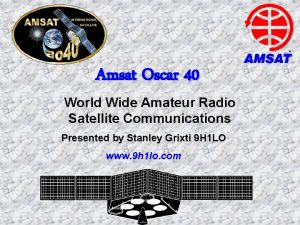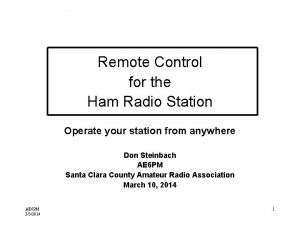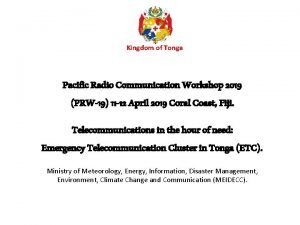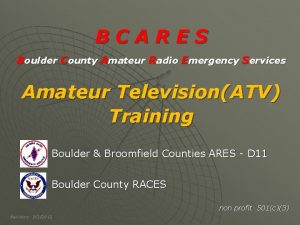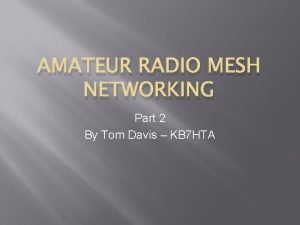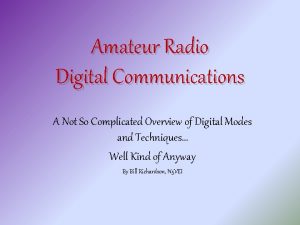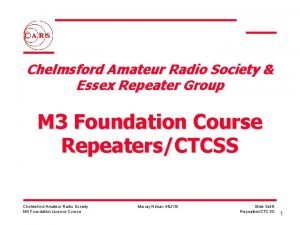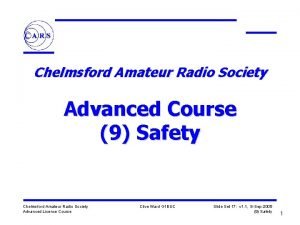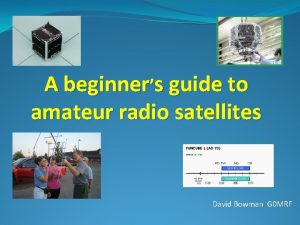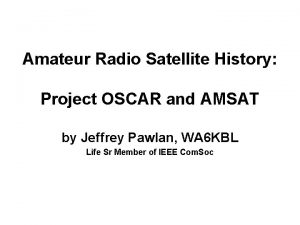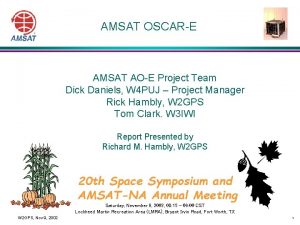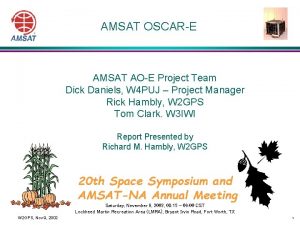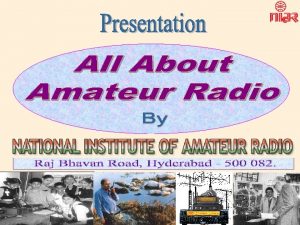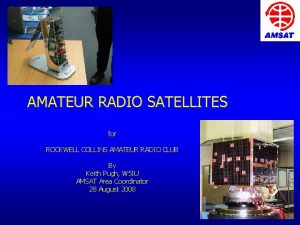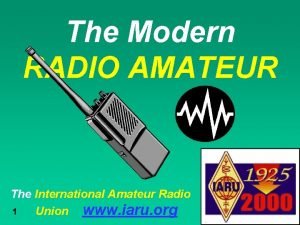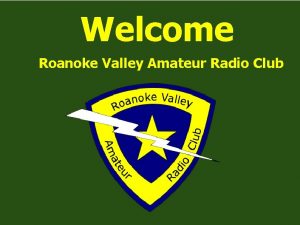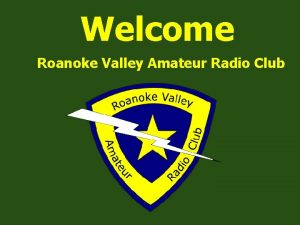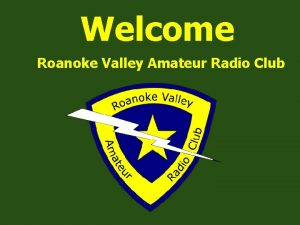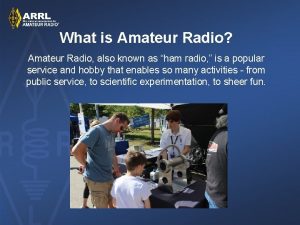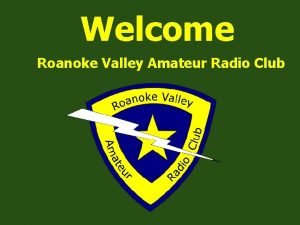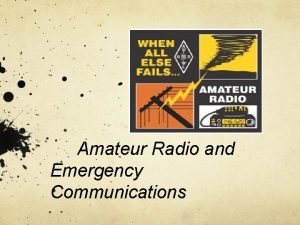Amsat Oscar 40 World Wide Amateur Radio Satellite













- Slides: 13

Amsat Oscar 40 World Wide Amateur Radio Satellite Communications Presented by Stanley Grixti 9 H 1 LO www. 9 h 1 lo. com

• AO-40 was initially known as Phase 3 D, or P 3 D. It’s the fourth amateur Phase 3 satellite, hence the ‘D’. • Phase 1 amateur satellites were designed to last only a few weeks, having either no or limited means of power replenishment during orbit. • Phase 2 satellites are in a Low Earth Orbit (or LEO), and lend themselves to communication over distances up to 4, 000 miles or so. • Phase 3 satellites are designed to operate over much longer distances because for most of their highly elliptical orbit they are at a much higher altitude than the LEO’s. AO-40 is the most complex and feature laden amateur satellite ever flown.

ØWhen launched on November 16 2000, AO-40 seemed to be working correctly, or ‘nominally’, except for the 70 cm transmitter. ØSoon after being launched, the satellite started beacon transmission of telemetry data on the 2 m band. And it sounded very loud! ØAO-40 was left in an elliptical orbit, essentially in the same plane as the equator, as expected. For optimum use, the preferred orbit needed to be changed somewhat. ØOn December 13 2000, during some orbital manoeuvres using the 400 N motor, AO 40 went silent. ØTo sighs of relief across the globe, on 25 December 2000 the 2401 MHz (S band) beacon was switched on successfully, but a number of systems were now not working correctly, in particular the 2 m transmitter ØDespite the setback, on May 5 2000 the transponder (the device allowing two-way communication) was switched on for a trial period until 30 May 2000. With reports from around the globe of worldwide contacts, this proved the satellite to be an unmitigated success. ØSome further orbital manoeuvres ensued starting 21 June 2000, this time using the a second motor: the Arcjet (or ATOS). Designed for smaller orbital changes than the 400 N motor, over a few orbits the Arcjet was programmed to fire for a couple of hours at perigee. ØOn 30 June 2000, the Arcjet firings were finished, and AO-40 was in a slightly better orbit, but unexpectedly all of the fuel had been consumed.

Ø The equipment is too expensive Ø You need specialist microwave skills Ø You need expensive specialist tools and test equipment

Receiver setup • Antenna • Downconverter • Receiver

Receive Antenna • 60 cm TVRO Offset Fed Dish • Helix antenna

§ Feed does not obscure radiated beam § Slightly elliptical § Section of a full-size parabolic dish

• Convert 2. 4 GHz to an Intermediate Frequency (IF) • Cheap Ex-TV Receive converters can be used • Modifications can be very simple • Simple kits can be built • Ready made converters 9 H 1 LO’s Converter G 3 WDG Kit Converter Drake 2880 Ex-TV Converter

• SSB 435 MHz Transmitter • Between 25 w - 100 w RF Output • Linear Amplifier could also be used Uplink can also be on 1296 MHz

• 435 MHz • >10 d. Bic gain • 8 to 15 Elements • At least 250 w ERP

AO-40’s Orbit 59, 000 – 65, 000 KM at Apogee 1500 – 850 KM at Perigee

AO-40’s footprint

Oscar 40 Activity Demo at the MARL HQ Yard 25 th May 2003 starting at 9: 30 am
 Amsat oscar 10
Amsat oscar 10 Remote control ham radio
Remote control ham radio Ham radio tonga
Ham radio tonga Boulder amateur radio club
Boulder amateur radio club Norc acronym
Norc acronym Amateur radio digital communications
Amateur radio digital communications Chelmsford amateur radio society
Chelmsford amateur radio society Chelmsford amateur radio society
Chelmsford amateur radio society Chelmsford amateur radio society
Chelmsford amateur radio society Bbhn
Bbhn Amsat droid free
Amsat droid free Es hail 2 position
Es hail 2 position Digital audio radio service
Digital audio radio service What is a mid shot
What is a mid shot
